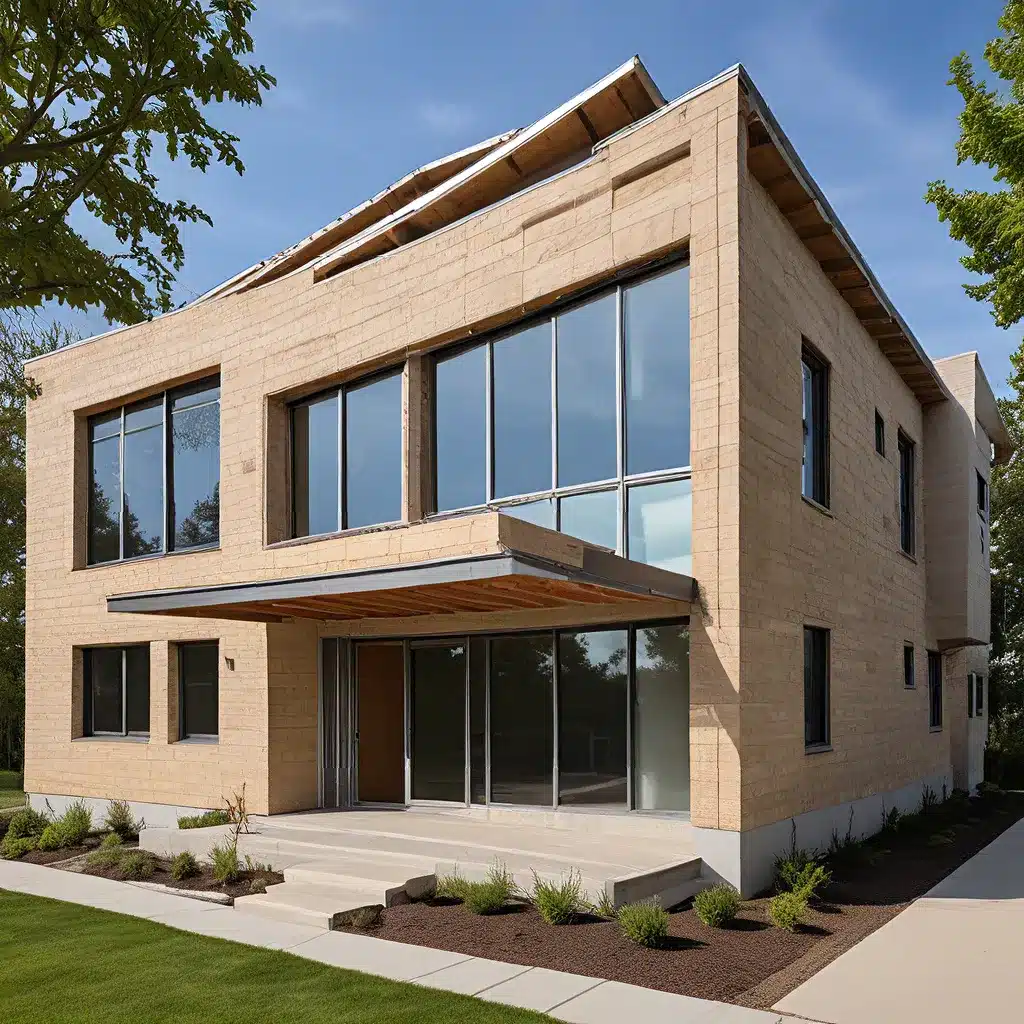
As a passionate advocate for sustainable living, I’ve been fascinated by the rapid advancements in building envelope design that are revolutionizing the way we construct energy-efficient homes. It’s an exciting time, my friends, where architects, engineers, and innovative thinkers are pushing the boundaries of what’s possible, all in the pursuit of creating more eco-friendly dwellings.
Rethinking the Thermal Envelope
One of the key areas of innovation in building envelope design is the thermal envelope – the physical barrier that separates the interior of a home from the exterior environment. Traditionally, this envelope has consisted of insulation, windows, and doors, but modern approaches are taking it to a whole new level.
For instance, the use of high-performance insulation materials like aerogel and structural insulated panels (SIPs) is on the rise. These advanced materials not only provide superior thermal resistance but also offer impressive durability and airtightness. By minimizing heat transfer through the envelope, they help reduce the energy required for heating and cooling, ultimately leading to significant cost savings for homeowners.
But it’s not just about the insulation. Advancements in window technology are also playing a crucial role. Triple-glazed windows with low-emissivity (low-E) coatings and argon or krypton gas fills are becoming increasingly popular, providing enhanced thermal performance and improved energy efficiency. These windows can reflect heat back into the home in the winter and block it from entering in the summer, creating a more comfortable and stable indoor environment.
Embracing Adaptive Building Envelope Systems
Another exciting development in building envelope design is the emergence of adaptive building envelope systems. These advanced systems use sensors, actuators, and control algorithms to dynamically adjust the thermal, optical, and ventilation properties of the envelope in response to changing environmental conditions.
For example, smart windows with electrochromic or thermochromic coatings can automatically adjust their tint or opacity to optimize daylight and solar heat gain throughout the day. This not only enhances occupant comfort but also reduces the energy needed for heating, cooling, and lighting.
Similarly, advanced ventilation systems with automated dampers and fans can regulate the flow of air through the building envelope, improving indoor air quality and optimizing energy efficiency. By continuously monitoring and adjusting the envelope’s performance, these adaptive systems can adapt to the constantly changing environment, ensuring that the home remains comfortable and energy-efficient.
Integrating Renewable Energy Technologies
But the innovations in building envelope design don’t stop there. Renewable energy technologies are being seamlessly integrated into the envelope, further enhancing the energy efficiency of homes.
Solar photovoltaic (PV) panels, for instance, can now be embedded directly into roofing materials, windows, and even exterior walls, transforming the building envelope into a self-generating power source. These Building-Integrated Photovoltaics (BIPV) systems not only generate clean energy but also contribute to the overall aesthetic of the home.
Similarly, geothermal heat pumps can be integrated into the foundation or underground components of the building envelope, tapping into the stable temperatures of the earth to provide efficient heating and cooling. This hybrid approach, combining the benefits of the building envelope and renewable energy technologies, is redefining the way we design and construct energy-efficient homes.
Embracing the Future of Building Envelope Design
As I explore these cutting-edge innovations in building envelope design, I can’t help but feel a sense of excitement and optimism for the future of sustainable living. The convergence of advanced materials, adaptive systems, and renewable energy technologies is paving the way for a new era of energy-efficient homes that are not only environmentally friendly but also comfortable, aesthetically pleasing, and cost-effective.
Of course, the journey towards net-zero energy and carbon-neutral homes is an ongoing process, with researchers and innovators constantly pushing the boundaries of what’s possible. But the progress we’ve made so far is truly inspiring, and I can’t wait to see what the future holds.
So, my friends, if you’re interested in creating an energy-efficient home or upgrading your existing one, I encourage you to explore the latest advancements in building envelope design. Firewinder, for example, offers a wide range of innovative solutions that can help you harness the power of sustainable living. Who knows, you might just be the one to inspire the next big breakthrough in this exciting field.

